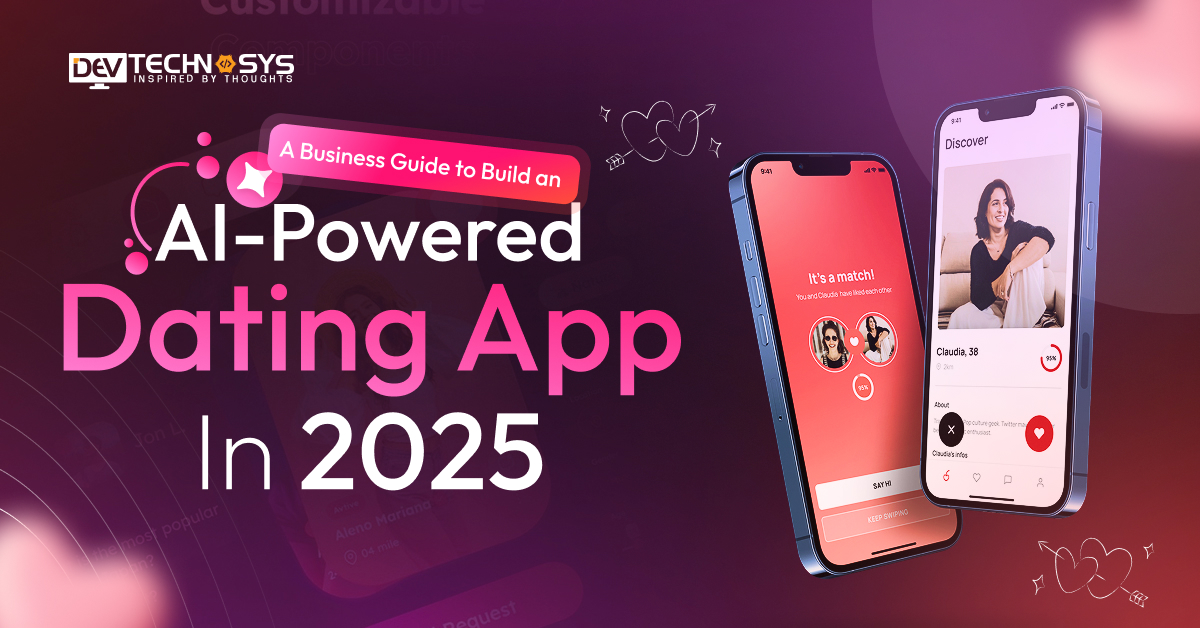Ever scanned a receipt and earned points for it? That’s the magic of apps like Fetch — turning your everyday shopping into rewards with just a few taps. With over 17 million active users and more than 2 billion receipts scanned, Fetch isn’t just another app on the store — it’s a loyalty revolution in your pocket.
So, how did an app that started with a simple idea become one of the top rewards platforms in the U.S.? And more importantly, how can you build an app like Fetch rewards?
Whether you’re a developer, a startup founder, or just someone with a brilliant idea on a napkin, this post will break down the must-haves, features, and tools you need to build your own Fetch-style app — without the fluff and with practical advice.
So, let’s begin!
What is a Fetch App?
A Fetch App is a mobile app that helps people earn rewards by scanning receipts. When you go shopping and get a receipt, you can take a picture of it using the receipt scanning app. Fetch gives you points for your purchases, which you can save up and turn into gift cards for stores like Amazon, Target, or Starbucks.
Similar to an app like Halan, it’s free to use, and you can earn extra points by buying certain brands or referring friends. The receipt scanning app is easy to use and a fun way to get a little something back from your everyday spending.
How Does a Fetch App Work?
A fetch is common in many industries, especially for tasks like gathering news, weather, social media updates, or other types of information from the internet. Here’s how a fetch app works in a basic sense:
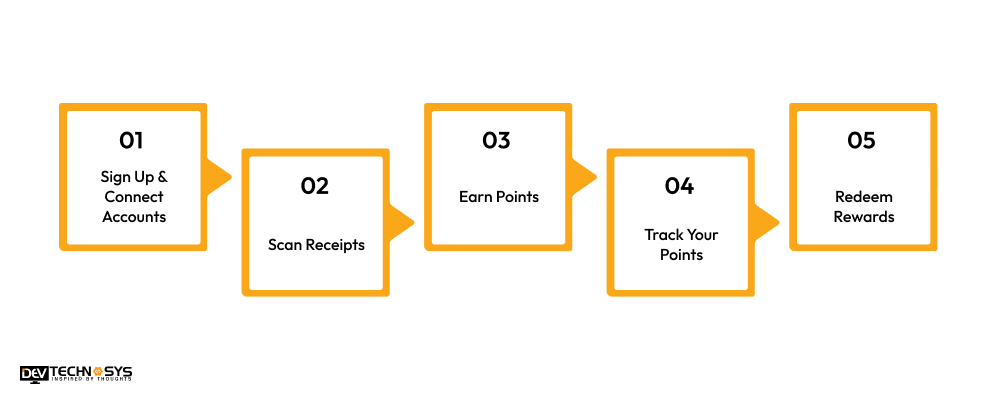
1. Sign Up & Connect Accounts
First, you download the Fetch app and create an account. Then, you can connect your email or Amazon account so Fetch can find online receipts too.
2. Scan Receipts
Whenever you shop, just take a picture of your paper receipt using the app. It’s quick and only takes a second. You can also forward e-receipts from your email.
3. Earn Points
Fetch reads your receipt and gives you points based on what you bought. Some brands give you extra points if you buy their products.
4. Track Your Points
You can see how many points you’ve earned in the receipt scanning app. The more receipts you scan, the more points you get!
5. Redeem Rewards
Once you collect enough points, you can exchange them for gift cards to places like Amazon, Starbucks, Target, and more.
Steps to Build an App Like Fetch
Building an app similar to Fetch, which is a popular rewards-based app where users earn points by scanning receipts, completing surveys, and participating in challenges, involves several key steps. Here’s a roadmap for building an app with similar functionality:
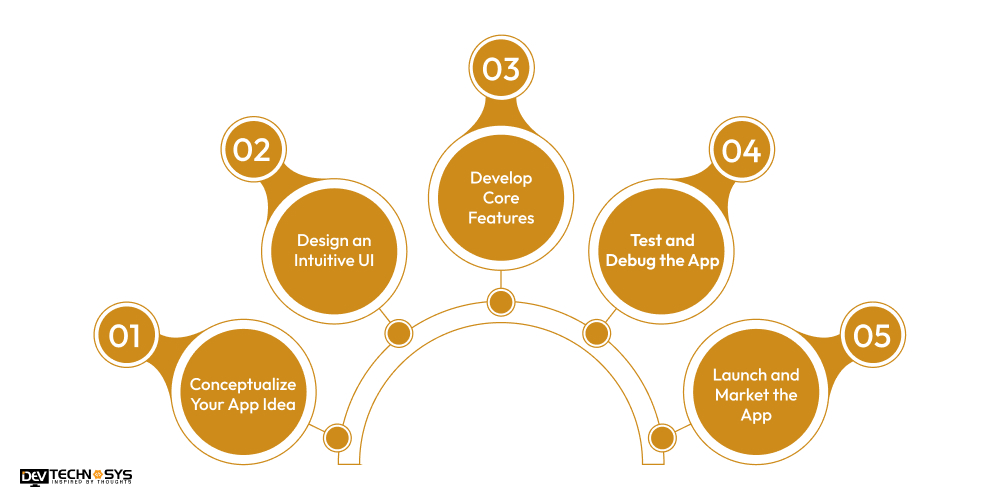
1. Conceptualize Your App Idea
The first step to build an app like Fetch is to clearly define your idea and understand your target market. Conduct thorough market research to identify the needs and expectations of your potential users.
In the case of Fetch, which is a delivery service app, you need to determine what type of deliveries your app will handle and how you can make the user experience as smooth and efficient as possible.
Research your competitors, identify their strengths and weaknesses, and find ways to improve on what they offer. By doing this, you’ll be able to identify gaps in the market and offer something truly valuable.
2. Design an Intuitive UI
The next step is to design an intuitive and visually appealing user interface (UI). Your app’s design should be clean, simple, and easy to navigate. Users should be able to easily sign up, place an order, track deliveries, and access customer support with minimal effort.
Focus on creating user-friendly navigation flows so that the app like Alibaba feels natural for both customers and delivery drivers. Invest in good UX design practices by creating wireframes and prototypes first, and gather feedback from real users to ensure your design works before you start coding.
3. Develop Core Features
Once the design is ready, it’s time to develop the core features of your receipt scanning app. For an app similar to Fetch, these features might include order placement, real-time tracking, payment gateway integration, delivery management, and a review system.
It’s important that an ecommerce development company in Dubai can integrate features like push notifications to keep users informed of their delivery status. You will also need to build a backend system for handling data, like user information, order details, and payment transactions.
If you’re planning to add a feature for delivery drivers, you’ll also need a separate dashboard where they can manage their tasks, communicate with customers, and track their earnings.
4. Test and Debug the App
Before you launch an app like Fetch for receipt scanning and rewards, you must thoroughly test it to ensure it works flawlessly. Conduct various types of testing, such as functional testing, usability testing, and security testing.
Make sure all core features, such as order placement, payment processing, and delivery tracking, work as intended. Also, test the rewards program app clone on multiple devices and operating systems to ensure that it’s accessible to a wide audience. If any bugs or issues arise during testing, address them immediately to avoid problems after launch.
5. Launch and Market the App
The final step is to launch your app and start marketing it. Ensure that your app is listed on popular platforms like the Apple App Store and Google Play Store, making it easy for users to find and download. You should also develop a marketing strategy that includes social media campaigns, partnerships with delivery services, and possibly influencer marketing.
Encourage users to leave reviews and feedback so you can continue to improve the loyalty rewards app. Monitor your loyalty rewards app’s performance post-launch, fix any issues, and keep the rewards program app clone updated with new features to ensure continued growth.
Key Features to Develop an App Like Fetch
If you’re planning to build an app like Fetch, it’s important to focus on features that offer simplicity, real value to users, and an easy-to-use interface. As per the e-commerce app development company, below are the essential features that you should consider adding to your app to ensure it stands out and gives users a seamless and rewarding experience.
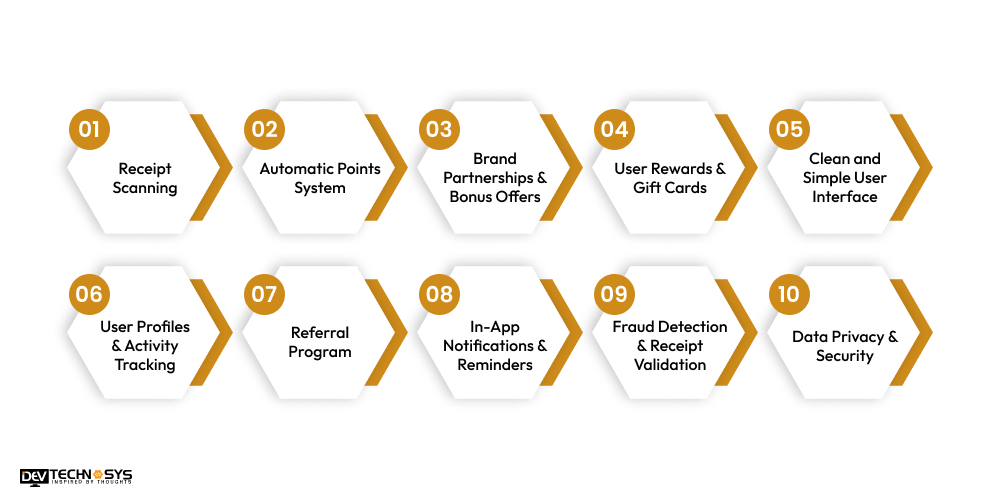
1. Receipt Scanning
This is the heart of the app. Users should be able to take a picture of their receipt using their phone camera. The app should automatically read the text (using OCR – Optical Character Recognition) and pick out important details like store name, date, total amount, and items purchased.
2. Automatic Points System
After the receipt is scanned, the discounts & offers app should automatically give users points based on what they bought or how much they spent. Some brands or items could earn more points as part of special promotions.
3. Brand Partnerships & Bonus Offers
To make it exciting, offer bonus points for buying products from partner brands. These offers should be updated regularly, and users should be able to see all current offers in a special section of the app.
4. User Rewards & Gift Cards
Let users redeem their earned points for gift cards, discounts, or even donations to charities. This is one of the biggest motivations for people to use the shopping app development solutions, so the reward options should be clear, fun, and easy to access.
5. Clean and Simple User Interface
When you build an app like Fetch clone, it should be visually clean and simple to use. Most users don’t want to deal with clutter or too many steps. Make sure the home screen shows points earned, recent activity, and has an easy-to-find “Scan Receipt” button.
6. User Profiles & Activity Tracking
Each user should have a profile where they can see their total points, past redemptions, and scanned receipts. A history tab or timeline can make it easier for users to keep track of their progress.
7. Referral Program
An ecommerce application development services team can add a way for users to invite friends. When a friend signs up and scans their first receipt, both the referrer and the friend should earn bonus points. This helps grow the user base quickly and keeps users engaged.
8. In-App Notifications & Reminders
To keep people coming back, the discounts & offers app should send friendly reminders like “Don’t forget to scan today’s receipt!” or “New bonus offers available!” You can also notify users when their rewards are ready to be redeemed.
9. Fraud Detection & Receipt Validation
To prevent cheating, an ecommerce app development services team can include smart checks to make sure receipts are real and not reused or fake. Use AI and simple rules (like one scan per receipt/store per day) to keep things fair.
10. Data Privacy & Security
Since the incentive rewards app will handle personal shopping info, it’s important to protect user data. Make sure all information is stored securely, and explain your privacy policy clearly so users trust the incentive rewards app.
5 Best Rewards Apps like Fetch
If you’re someone who loves earning rewards for your everyday purchases, you’re probably already familiar with apps like Fetch alternatives. These apps allow you to earn points or cashback by uploading receipts, scanning barcodes, or making certain purchases.
In this article, we will explore five of the best rewards apps similar to Fetch that can help you maximize your rewards while shopping.
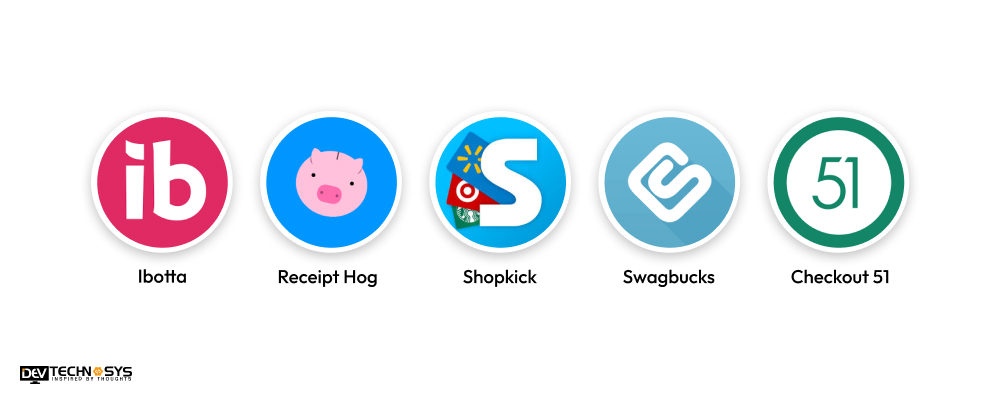
|
Top Rewards Apps like Fetch |
Available Platform | Downloads | Ratings |
| Ibotta | Android | iOS | 10M+ |
3.9 |
|
Receipt Hog |
Android | iOS | 5M+ | 4.4 |
| Shopkick | Android | iOS | 10M+ |
2.1 |
|
Swagbucks |
Android | iOS | 10M+ | 4.4 |
| Checkout 51 | Android | iOS | 10M+ |
3.3 |
How Much Does It Cost To Create An App Like Fetch?
The cost to build an app like Fetch can be somewhere between $10,000 to $25,000. This Fetch app development cost can fluctuate based on the app’s complexity, features, and platform. Also, consult with a shopping app development company.
Additional considerations, such as design quality, Fetch rewards app clone development time, and integration with third-party services, can also impact the total cost to develop an app like Fetch clone.
Furthermore, ongoing maintenance, updates, and marketing efforts will add to the overall investment, so it’s important to budget for both the Fetch app development clone and post-launch support.
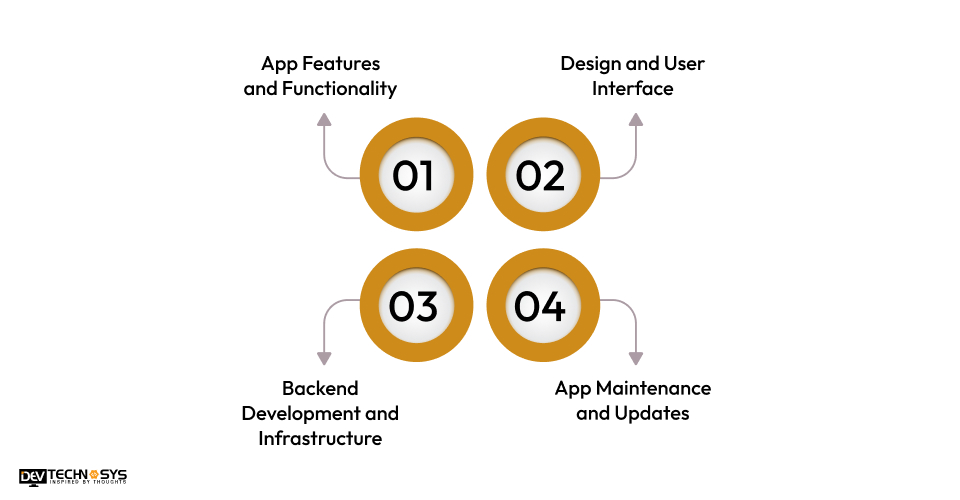
1. App Features and Functionality
The more features you want in your app, the higher the Fetch app development cost clone.
Fetch, for example, offers features like receipt scanning, reward points, a user-friendly interface, and integration with retailers. These features require backend support, database management, and APIs to connect with other systems.
If your app needs more advanced features like social sharing, real-time notifications, or multi-platform support (iOS and Android), the cost of Fetch reward app development will rise accordingly. Developing a simple version with just the basic functionality would be cheaper than a fully-featured app.
|
Feature Category |
Estimated Cost (USD) |
| User Authentication |
$1,000 – 3,000 |
|
User Profiles |
$1,500 – 4,000 |
| Points & Rewards System |
$1,000 – 3,000 |
|
Offers & Promotions |
$2,500 – 7,000 |
| Push Notifications |
$1,000 – 2,500 |
|
Search & Filtering |
$2,000 – 5,000 |
| Barcode Scanner |
$1,500 – 4,000 |
|
Location Services |
$2,000 – 5,000 |
| Social Sharing |
$1,000 – 3,000 |
2. Design and User Interface
A clean, attractive, and user-friendly design is crucial for retaining users. Fetch’s app uses a smooth interface with easy navigation and visually appealing elements. If you build an app like Fetch clone, such designs require the work of professional UI/UX designers.
The more complex and polished the design, the higher the cost. Designing an intuitive experience that appeals to users across various devices also adds to the Fetch app development cost.
|
Aspect of Design & UI |
Estimated Cost Range (USD) |
| Discovery & Planning |
$2,500 – $10,000 |
|
Wireframing & Prototyping |
$5,000 – $15,000 |
| User Interface (UI) Design |
$5,000 – $20,000+ |
|
Visual Assets (Icons, Illustrations) |
$1,000 – $5,000+ |
| UI Kit & Style Guide |
$1,500 – $5,000 |
|
Usability Testing & Iteration |
$3,000 – $10,000+ |
3. Backend Development and Infrastructure
The backend of an app handles everything behind the scenes, such as user authentication, data storage, and reward app development tracking. To ensure that your app functions smoothly with large amounts of data, you’ll need a robust backend system.
This typically involves cloud storage, database management, and secure API integrations, all of which require skilled developers and infrastructure costs. High-quality backend development can significantly increase the Fetch app development cost.
|
Feature/Component |
Estimated Cost Range (₹ in Indian Rupees) |
| Server-side Logic |
₹ 2,000 – ₹ 5,000+ |
|
Database Development |
₹ 1,000 – ₹ 3,000+ |
| API Development & Integration |
₹ 1,000 – ₹ 4,000+ |
|
Security Implementation |
₹ 2,000 – ₹ 5,000+ |
4. App Maintenance and Updates
After the app is launched, ongoing maintenance is essential to fix bugs, add new features, and ensure compatibility with new devices or operating system updates. Regular updates to keep the point-earning app running smoothly and securely can add to long-term Fetch app development costs. Fetch, for example, regularly updates its features and ensures that its app is compatible with the latest smartphone models, which means you’ll need to budget for continual development and support.
|
Maintenance Category |
Typical Cost Range (Annual) |
|
Bug Fixes & Updates |
$1,000 – $2,000+ |
|
Development Maintenance |
$1,000 – $5,000+ |
|
UI/UX Maintenance |
$2,000 – $4,000+ |
| Security Maintenance |
$2,000 – $4,000+ |
How To Monetize Your Reward App Like Fetch?
Monetizing a reward app similar to Fetch can be a great way to generate revenue while providing value to users. Here are the simple yet effective strategies you can add to your app to boost its monetization potential:
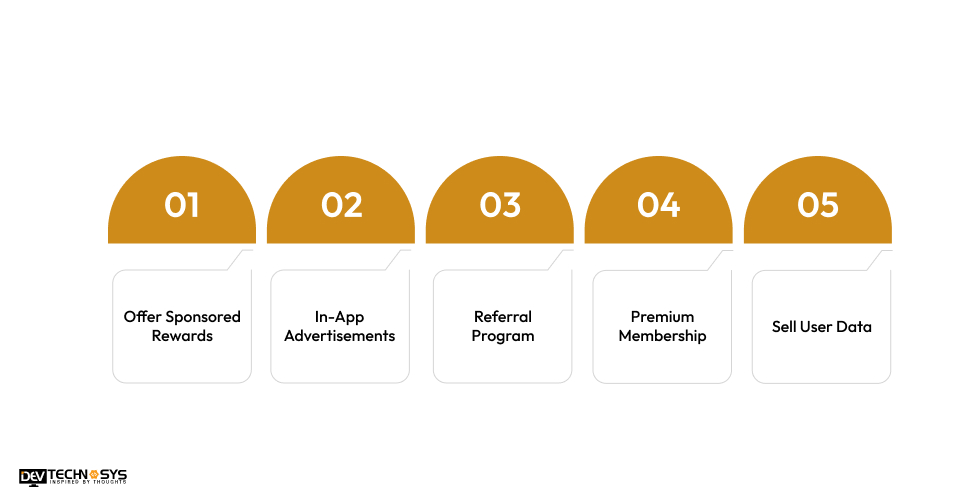
1. Offer Sponsored Rewards
You can partner with brands or retailers to offer sponsored rewards. This involves allowing companies to sponsor specific offers or products that users can redeem with their points. For example, a user can earn rewards by scanning receipts from stores that are partnered with specific brands. These brands will pay you for promoting their products, and users benefit by earning rewards they can use for gift cards, discounts, or other prizes.
2. In-App Advertisements
Displaying non-intrusive ads within the cashback app is another easy way to monetize. You can integrate ad networks like Google AdMob or Facebook Audience Network to show banner ads or interstitial ads. Ensure that the ads don’t interrupt the user experience too much, as you don’t want to frustrate your users. This method is great because it generates revenue every time users interact with or view an ad.
3. Referral Program
A referral program incentivizes users to invite others to download the cashback app, helping to grow your user base. You can reward both the referring user and the new user with points or bonuses. For example, every time someone they refer signs up and starts earning points, both users get a certain number of points. This not only grows your shopping rewards app’s user base but also keeps current users engaged and motivated.
4. Premium Membership
As per the shopping app development services team, you can offer a premium membership where users pay a subscription fee for extra benefits. These benefits could include earning more points per receipt scan, exclusive rewards, or access to special promotions.
Premium users might also enjoy an ad-free experience or faster point accumulation, adding value to their subscription. This steady stream of income can help keep your coupon aggregator app running smoothly and fund future features.
5. Sell User Data
You can collect anonymized user data (such as shopping habits, preferences, and spending patterns) and sell this information to companies or market research firms that are interested in consumer behavior.
Be transparent about this process, and make sure to get explicit consent from users. Offering privacy controls and ensuring that personal data is protected will help you maintain trust with your user base while generating revenue.
Final Thoughts
Fetch like app development isn’t just about tech; it’s about turning smart ideas into user-friendly experiences. With the right mix of creativity, planning, and expert help, you can bring your vision to life. Whether it’s rewards, receipts, or something brand new, your app could be the next big thing.
Don’t go it alone, partner with a top mobile app development company to make it happen. They’ve got the tools, talent, and know-how to turn your dream into a sleek, working app. Ready to build a loyalty and cashback app like Fetch? Let’s build it!
FAQs
1. What Are the Core Features Required to Make an App like Fetch?
To build a Fetch-like app, you’ll need to include:
- Receipt scanning
- User accounts and authentication
- Points and rewards system
- Product/brand partnerships and offer tracking
- Push notifications
- Data analytics dashboard
- Referral/invite system
2. How Can I Monetize an Application like Fetch?
- Affiliate marketing
- Brand partnerships
- In-app advertisements
- Premium features
- Subscription model
3. How Much Does it Cost to Develop an App like Fetch?
Creating a rewards app like Fetch typically costs between $10,000 to $25,000, depending on features, cashback rewards platforms, and Fetch app development company rates. Advanced analytics, AI receipt scanning, and secure backend integration can increase costs.
4. How Long Does it Take to Create an App like Fetch?
The time usually takes 2 to 7 months to make an app like Fetch from planning to launch, including design, development, testing, and deployment.
5. What Tech Stack is Ideal for a Rewards App?
A robust stack would involve React Native or Flutter for the frontend, Node.js or Django for the backend, and AI-based OCR libraries for receipt scanning.







